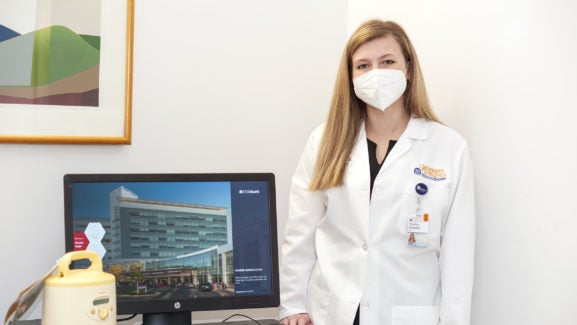
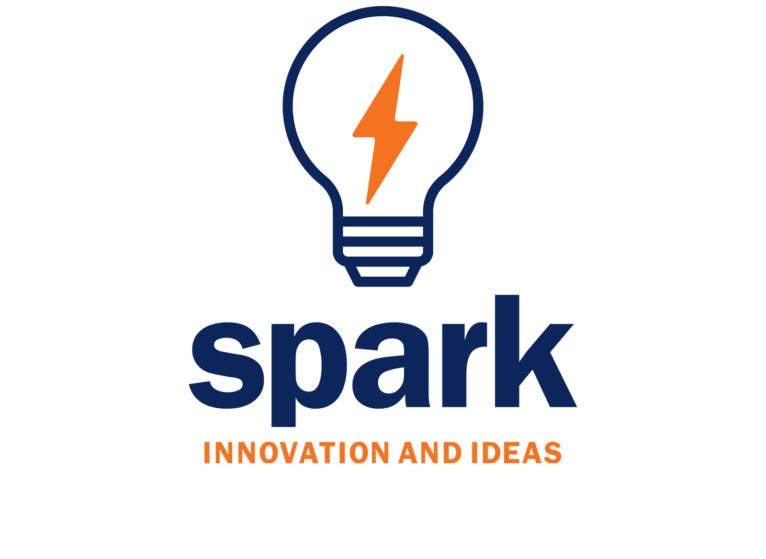
Spark Innovation Competition: First-Round Winners
Becoming the nation’s leading public academic health system and best place to work begins with leveraging the talent, energy, and dedication of our team members. This is exactly why UVA Health launched the Spark Innovation Competition — to help bring great ideas to life and transform the culture of UVA Health.
In preparing for UVA Health Week (May 8-14), we take time to recognize our team members by highlighting their contributions and value. Nearly 300 outstanding and diverse ideas were submitted during the Spark Innovation Competition. The team members who submitted ideas are represented across more than 80 different areas of departments, units, and centers of UVA Health across the state of Virginia. The awards committee selected a total of 11 ideas as first-round winners because of their potential to positively impact the clinical environment and culture at UVA Health. Please join us in congratulating these first-round winners, and thanking all of the participants for their dedication to positively transforming the culture of UVA Health.
Because UVA Health wants to bring as many ideas to life as possible, all submissions will be shared and evaluated with the leadership of the area impacted by the idea. Additionally, since one of the winning first-round ideas was already implemented — improving team member’s access to workstations while lactating — a bonus idea was selected. The 11 first-round winning ideas are now in the hands of Performance Improvement Coaches, who will be working over the next month to develop the ideas towards feasibility and possible implementation. The final outcomes of the second round of the competition will be shared this Summer, when top ideas will be announced for implementation.
Summary of First-Round Winning Ideas
Dr. Matthew Meyer, Anesthesiology
- Problem | There are 100s-1,000s of instruments that need to be identified in the sterile processing department. It takes a new employee 1-6 months to learn those instruments well enough to be independent in assembling surgical kits. When a kit should be assembled in minutes, the process of identifying unknown instruments can double or triple the time to assemble a kit — a great inefficiency.
- Idea | 1) Create a computer vision (CV) model that can identify instruments, 2) Embed CV model into an edge computing node with camera, and 3) Create real-time reference library for surgical instruments that can rapidly ID instruments by image.
Dr. Christine Schaeffer, Plastic and Maxillofacial Surgery Resident
- Problem | In general, the lactating trainee needs to pump 3-4 times during their 12-hour shift, for 10-30 minute time intervals. If medical documentation is not performed during the work day, it must be performed after hours, negatively impacting wellness and time that could be spent with children. Limited computer access puts stress on trainees to decrease their time spent pumping in order to perform time sensitive tasks that could be performed if they had computer. We would also like to address the lack of insight into the challenges faced by lactating trainees and lack of established expectations to accommodate the needs of lactating trainees.
- Idea | Provide lactating GME trainees with access to computers in lactation rooms. Establish a document that can be filled out collaboratively by individual training programs to establish expectations to meet the needs of their lactating trainees upon return from maternity leave that would be distributed to faculty and co-trainees. Consider a computer-based learning module hospital-wide to discuss the benefits and importance of breast feeding, challenges faced by lactating employees, and ways we can support our lactating colleagues.
Deb Curtis, PNSO & Nursing Governance
- Problem | Post-ED Followup / ED Bounceback & Readmissions
- Idea | Suggest a partnership between Telehealth & Pt Access team and a rotation of care providers to provide 1-2 days of follow-up calls to at-risk patients the day after discharge from ED. Inpatient & Post-Op/Post-Procedural to assess "how are you feeling now" & "do you need follow up care appointment assistance", to prevent bounce back to ED/readmission, since it's virtually impossible to get a prompt PCP/specialty follow up appointment in these COVID-compressed staffing times. Set up a pipeline to UVA-affiliated urgent care as needed, and/or have a percentage of placeholder appointment times held in the most commonly needed clinics for this follow up pipeline to use.
Richard Rose, Telemedicine
- Problem | Patients getting lost in the health system
- Idea | Creating an app that integrates with Mychart and Epic that updates the patent's appointment location. When the patient arrives for their appointment, the app directs the patient to the location of their appointment, labs, radiology, etc. all the way back to their vehicle. The app also has a stand-alone map function to help employees navigate UVA buildings. Future expansions could roll out a student portal that would help students navigate the health system and campus. Also, the app could have a built-in alerting system with instructions to the nearest exits from the patients and employees current location.
Jordyn Rine, Orthopedic Center
- Problem | Patients who need interpreters are unable to have a consistent Cyracom interpreter throughout their duration of visit at an outpatient clinic. For example, during hub check in they have to wait to be connected to an interpreter to be able to check in. Then once in the outpatient clinic, they have to wait again for an interpreter to be connected in clinic. They have wait times at each transition when visiting multiple clinics.
- Idea | Assign a patient with a Cyracom interpreter (iPad, phone, etc.) to use throughout the duration of their time while at appointments within the same building to cut down on wait time for the patient and team member time making Cryacom connections. I think it would greatly improve patient outcomes and overall patient satisfaction.
Dr. Bob Goldstein, Anesthesiology
- Problem | Patients and families do not have easy access to medication deposit boxes to discard old medications, both controlled and non-controlled medications. Given that in-home diversion of medications is the primary route for diversion of controlled substances, especially in teens, we need to provide easier access for patients to discard their unused medications.
- Idea | Medication reclaiming deposit boxes need to be conveniently/visibly placed at the 545 (Pain Management Center located there) and 415 buildings at the Fontaine complex and also a box placed at the Northridge medical complex. Many patients have care at the West complex and ECCCC. Boxes should be conveniently/visibly positioned there. Extensive PSA and education programs directed at the community at large and UVAHS patients.
Ann Mercer, Peri-Operative Services
- Problem | The first thing that patients see when arriving at UVA is a parking garage. They are grey and dismal in my opinion.
- Idea | Paint the grey! Murals or just bright colors (since there is a lot to cover.) I can imagine a family coming to the Battle building and the first thing a kid sees is pictures of kids at their height, on the garage walls, or pictures of families walking together. It’s important to make a patient’s visit here a friendly and good experience, especially children who may be coming to the hospital for the first time.
Michael Jagielski, Nerancy Neuro ICU
- Problem | To create an easier, more efficient way for bedside staff to request supplies from the Supply Room when team members need supplies for the care of our patients.
- Idea | To fix this problem, I believe developing a "marketplace" software, accessible by bedside staff, that allows staff to request supplies quickly and easily, to be aware of how much reserve of a particular item is remaining, and have an estimated time of arrival to the unit/care area.
Dr. Miriam Gomez-Sanchez, Hospital Medicine
- Problem | Burnout is a huge problem in medicine particularly in hospital medicine during a pandemic. Prior strategies such as free mindfulness lectures, computer-based learning modules on sleep and stress are ineffective and add additional burdens to the employee.
- Idea | Creation of a “mini” gym space. Exercise has well known positive effects on mood/concentration/sleep. Long work hours make it difficult to make exercise a part of daily life. Having a space with a treadmill, free weights, rowing machine, or stair master located in the hospital would make it easy/convenient to have a quick work out session before or after work. Just 15 minutes of exercise has its benefits and if the goal is a happier and healthier employee.
Dr. Carrie Kovacik, Pharmacy Resident
- Problem | I would like to address the lack of access to menstruation products within the hospital for staff and visitors. To quote a former member of the Purdue University Student Government, “Menstrual care products are just as necessary and should be just as free as the toilet paper, seat covers, soap and napkins in bathrooms.”
- Idea | Convert the current feminine hygiene dispensers in the hospital to provide free pads, tampons, and liners and add products to bathrooms that do not currently have dispensers.
Dr. Kathie Hullfish, Urology
- Problem | Excessive transcribing of patient info into the EMR.
- Idea | Have kiosks in check in/waiting areas for patients to enter all pertinent info (as they would if they were handed a paper copy questionnaire). Link kiosk responses to Epic so all history is automatically populated into Epic. Could save a ton of time for providers, support staff, and patients.
In case you missed it

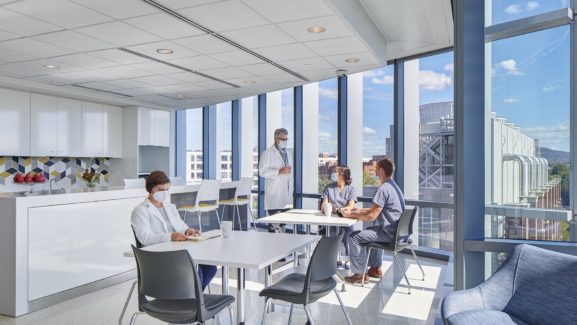
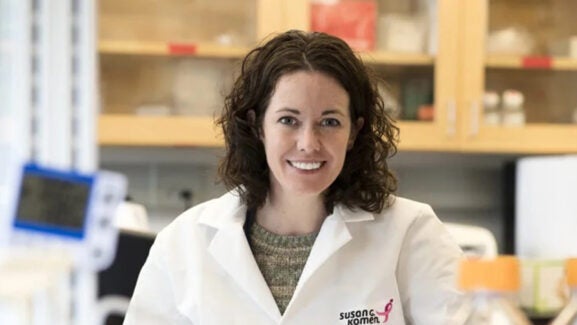
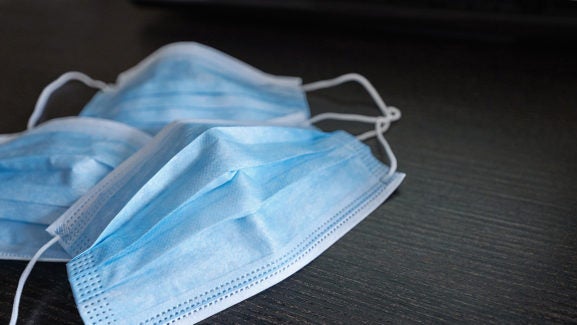
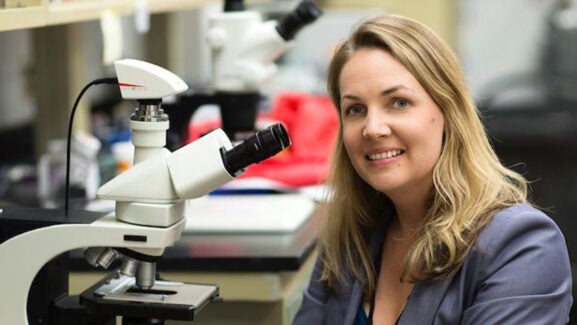
I do have couple ideas. When will be the next time the Spark Innovation Competition?
The next Spark competition will likely launch at the end of this year. Dates will be announced as soon as they are available.
–Brian Murphy, editor
These ideas are really fantastic. I love ALL of them and see some “Quick Wins” here that could be implemented pretty easily. Nice job!
When you do paint the garage murals, how about continuing the parking space lines up the building so they are more easily adhered to?